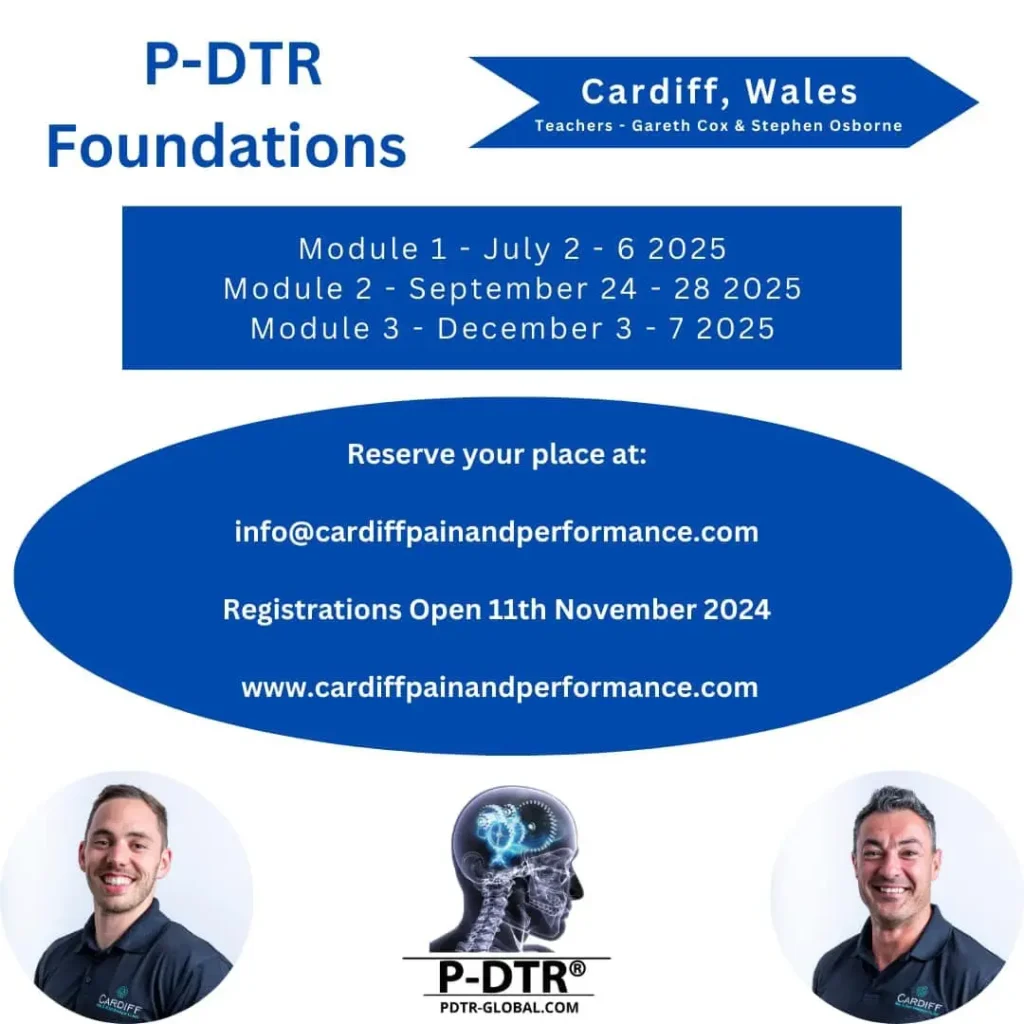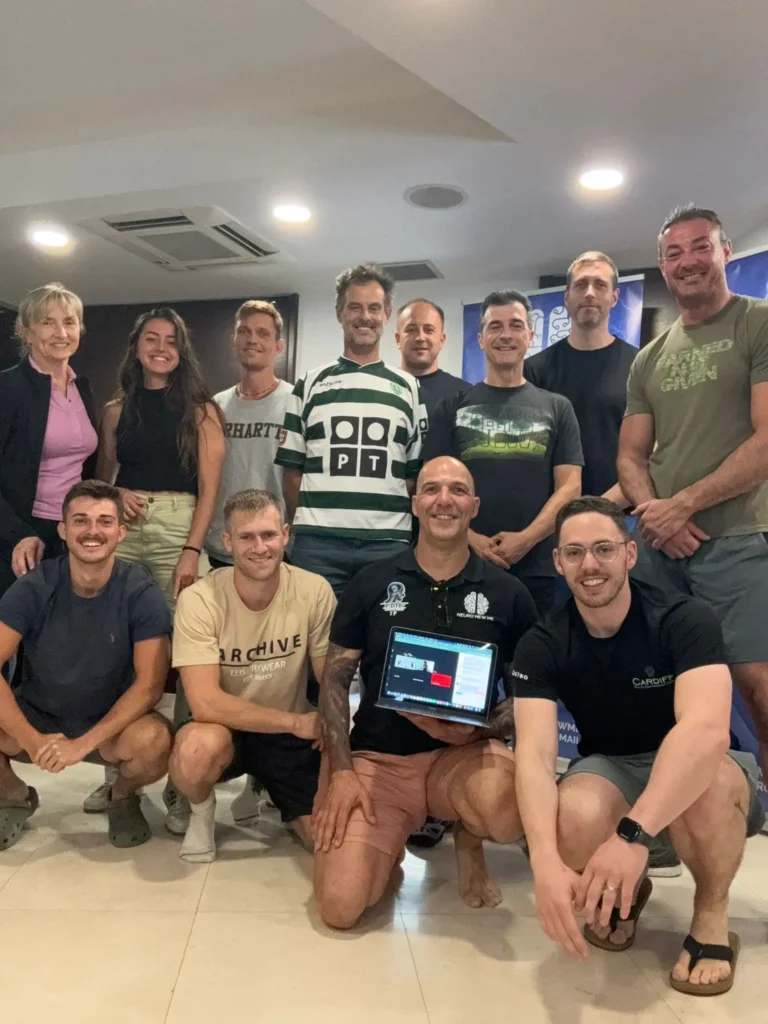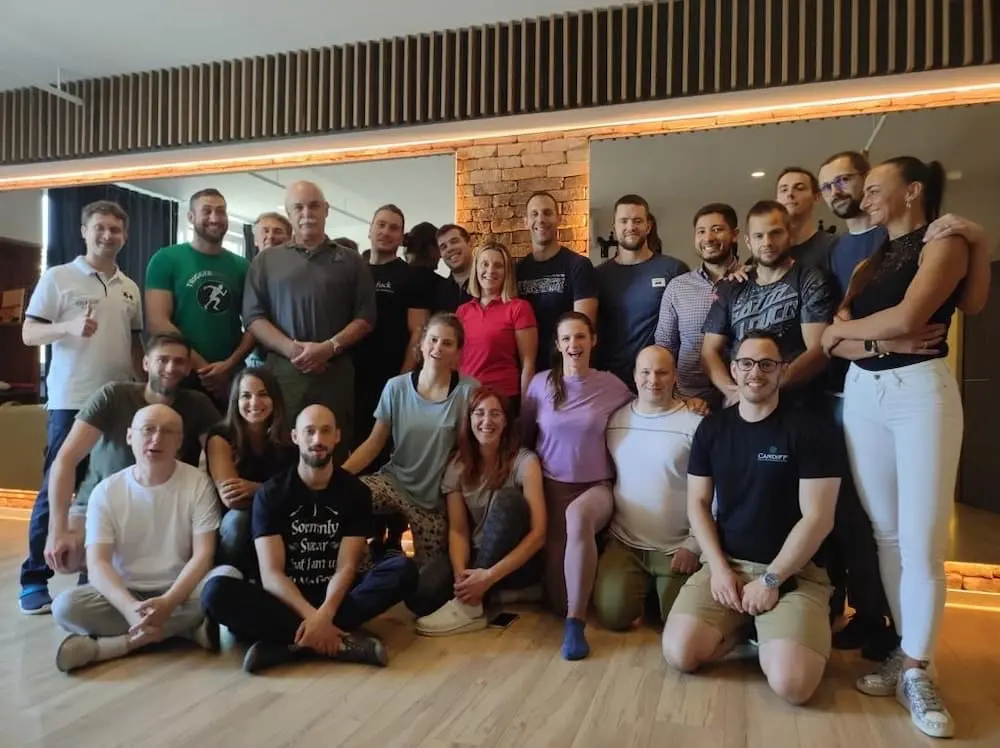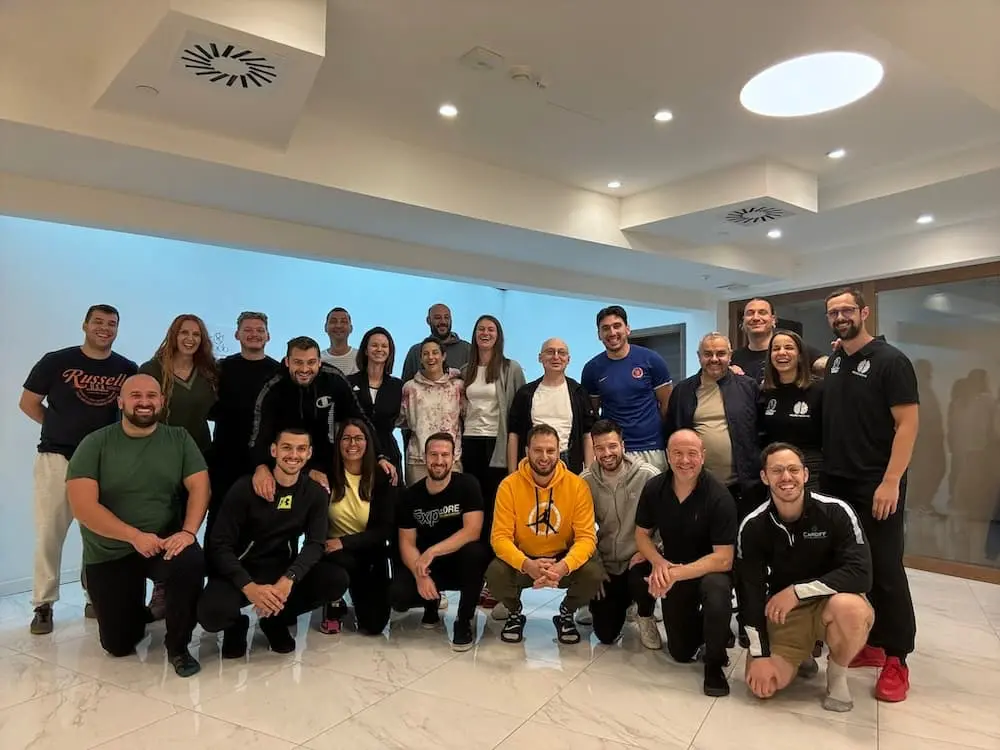P-DTR Courses

P-DTR
P-DTR, or Proprioceptive Deep Tendon Reflex, represents a groundbreaking approach in understanding and managing the body’s complex neurological network. Think of it as fine-tuning your body’s internal operating system. This method goes beyond merely concealing symptoms; it aims to deliver enduring solutions by fundamentally reprogramming how the body reacts to stimuli.
Our mission is to pioneer this innovative technique in the realm of healthcare. We offer a journey towards holistic wellness that is rooted in cutting-edge science and harmonizes with the body’s inherent wisdom. Embrace the journey with us and discover the transformative impact of P-DTR for a harmonious, pain-free life.
P-DTR is the practical application of clinical neurology. A revolutionary technique created by Dr Jose Palomar, P-DTR uses manual muscle testing as a feedback tool to find areas of heightened peripheral sensitisation and through the revolutionary concept of paired receptor theory normalises the information coming into the central nervous system as a result reducing perceived threat and pain.
Students will gain a thorough understanding of how the body creates basic dysfunctions and compensatory patterns and most importantly, the systematic process that has been developed to treat these dysfunctions on a permanent basis. Students can expect to learn how to improve the raw material the brain receives to make more accurate decisions about how to move and feel. Topics covered include, but are not limited to, all manner of mechanoreceptors, nociception, gait analysis, cranial sutures, and limbic disturbances.
For all further details about P-DTR and the research that has been done, go to http://www.pdtr-global.com
Who is this for?
- Osteopaths
- Chiropractors
- Physiotherapists
- Manual Therapists
- Hands on
- Bodyworkers
- Trainers
Do I need experience in Manual Muscle Testing ?
No, all training is done on the P-DTR course and you will be given all the relevant resources and tools to make you the best clinician possible.
Why P-DTR?
Are you fed of not knowing why some patients get better, and others don’t? Confused by the different communities that exist in the Manual Therapy world? Pain science, Biomechanics, Exercise, Education, Neurology…
P-DTR is the solution. We blend everything into one coherent thought process, with rules and structure to follow. We reduce threating sensory input, and deal with the causes of pain:
Peripheral and Central Sensitisation, Graded Exposure and Central reprocessing changes.
Check out our colleagues blog for more case examples at https://www.pdtrusa.com/blog/



The Course
P-DTR Foundations – Cardiff 2025
Module 1 – July 2 – 6 2025
Module 2 – September 24 – 28 2025
Module 3 – December 3 – 7 2025
Venue: Mercure Holland House Hotel, 24-26 Newport Rd, Cardiff, CF24 0DD
Course Times – 8am – 4pm with Lunch 1-2pm
Cost: £3200 – Secure your spot with a £400 Deposit. (Around £215 per day)
Payment can be made in up to 6 instalments for ease, speak to us for more details.
BOOK NOW BY EMAILING US AT INFO@CARDIFFPAINANDPERFORMANCE.COM
WANT TO LEARN MORE? DROP US A MESSAGE… WE ARE HAPPY TO HAVE A CHAT
P-DTR Videos & Downloads
What is P-DTR?
P-DTR Theory
How Does The Body Compensate?
P-DTR Demo 1
Manual Muscle Training
P-DTR Demo 2 - Manual Therapy vs P-DTR
P-DTR 90 Minute Introduction
Download Free PDF Guide
PDTR Curriculum
- Rules and modes
- Autogenic inhibition (X and II lines)
- Screening for optimal neurological organisation (switching/hypo/hypertonicity)
- Rules of Receptors (primary /secondary / tertiary)
- Introduction to mechanoreceptors
- Muscle spindle cells dysfunction (nuclear bag fibre & nuclear chain fibres) neurology and specific stimulus
- Reactor vs Reactive dysfunction
- Nociceptors dysfunctions (fast and slow pain)
- Neo spinothalamic & paleo spinothalamic
- Introduction to nociception
- PMRF & NWR (Nociceptive Withdrawal Reflex) Patterns
- The Event
- Golgi tendon organ
- Pacini Corpuscles
- Deep pressure dysfunction
- TS line
- Gait inhibition
- Neurogait 1
- Neurogait 2
- Palo- Alto
- PiLUS
- Pelvic Categories (1-3)
- Sacral distortion
- Cartilage rules
- Ligaments of the foot/pelvis/lower limb/hip/spinal
- Long kinematic chains (open & closed)
- Temperature receptor dysfunction
- Tickle and itch
- Fine & crude touch
- Vibrational dysfunction (ruffini meisner Krause Corpuscles)
- Use of tuning forks in resetting dysfunction
- Adrenal dysfunction (gradual adaptive syndrome)
- Cloacal synchronisation Joint position sense (conscious and unconscious)
- Labyrthine reflex
- Head on neck reflex
- Visual righting reflex
- Anterior & posterior pelvic reflex
- Cranial faults
- Aerobic v anaerobic respiratory dysfunction
- Emotional dysfunctions
- TCM Acupuncture
- Spinothalamic tracts
- Meridian dysfunctions
- Surrogate testing
- Multitasking
- Introduction to concepts of neurological health
Want Help to Decide if we are Right For You?
Our job is to find out why and get you on the road to recovery.
Contact Us
Get in touch with us
- 2C Waungron Road, LLandaff, Cardiff, CF5 2JJ
- 02920 329990
- info@cardiffpainandperformance.com
- Click to book your free assessment
- Click to book online

